Selection of artificial breeding King transfer worms in Bee Culture Technology
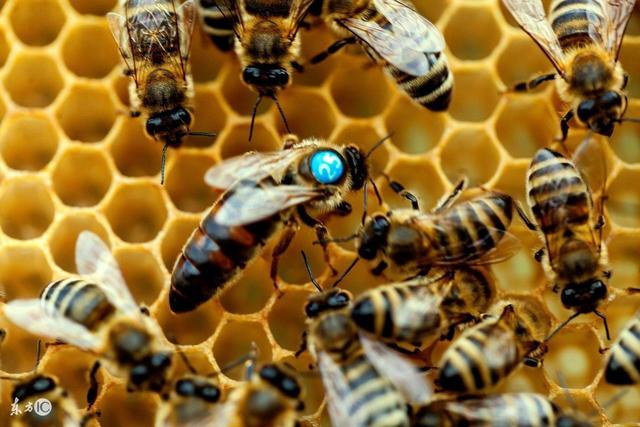
In addition to the close relationship between queen bee weight and egg weight and queen bee quality, various factors in the process of artificial rearing have a great influence on queen bee quality. These factors include the daily age of the larvae, the larval status, the operation methods, the feed needed to cultivate the queen bee, the number of queen bees in the same batch, the status of artificial platform, the status of capping the king platform in the feeding group and so on.

1. The relationship between the age of migratory worms and the quality of queen bee.
Weifer found that the body weight and the number of ovarian tubes of queen bee bred with different instar larvae decreased with the increase of larval age.
Walker studied the effect of the age of the larvae on the quality of the queen bee:
It was found that the average weight of the queen bee bred by the 1st instar larvae was 189mg.
The average weight of queen bee bred by 2-day-old larvae is 172mg.
The average weight of queen bee bred by 3-day-old larvae is 147mg.
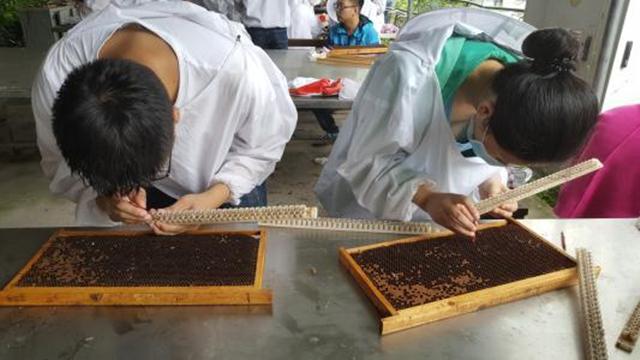
With the increase of the instar of the larvae, the body weight, the number of ovarian tubes, the diameter of the fertilized sac and the number of sperm entering the fertilized sac decreased. Some scientists have cultivated queen bees with different day-old larvae, and this problem has also been confirmed by dissecting and determining the number of ovarian tubes:
The average number of ovarian tubes of queen bee bred by 1-day-old larvae was 208.
The average number of ovarian tubes of queen bee bred by 2-instar larvae is 202.
Ross used eggs and 1-to 3-day-old worker bee larvae to breed the king. The results are as follows:
The queen bee bred by egg transfer has an average of 315 ovarian tubes, of which more than 300 account for 80%.

The 1st instar larvae were removed to breed the king. The average number of ovarian tubes of the queen bee is 299.5, and 51% of them are more than 300.
The 2nd instar larvae were removed to breed the king. The average number of ovarian tubes of the queen bee is 293.7, and 39% of them are more than 300.
The average number of ovarian tubes of queen bee cultured with 3-day-old larvae was only 264.8, and only 12% of them were more than 300.
The natural alternation rate of queen bee bred with larger worker bee larvae was higher than that of queen bee bred with smaller larvae. Chen Shibi found that the birth weight of queen bee bred with newly hatched larvae was significantly higher than that of queen bee bred with 1-day-old larvae. The quality of queen bee larvae cultured with different day-old worker bee larvae is different, mainly because the difference of food composition between worker bee and queen bee larvae increases with the increase of larval instar. Therefore, the older the larva is, the closer it is to the worker bee.
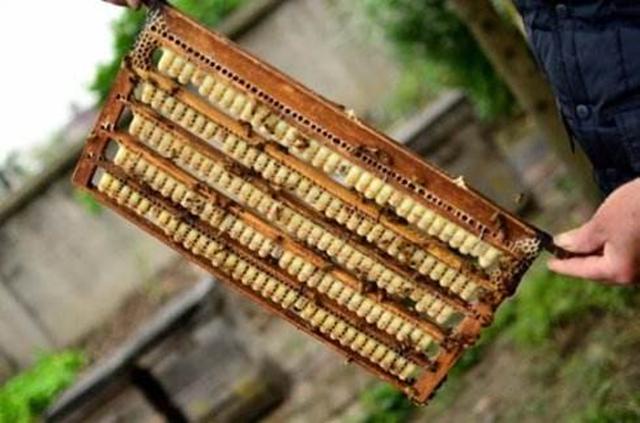
2. The relationship between the larval state and the quality of the queen bee.
The worker bee larvae molted for 4 times in the post-embryonic development before capping. The appearance of the larvae gradually changed from glossy to dull before molting. The USSR Beekeeping Institute cultivated queen bees with glossy and dull larvae, and the queen bee was cultivated with glossy larvae with an acceptance rate of 79%. The average birth weight of queen bee was 195.9mg, and the average number of ovarian tubes per ovary was 176.5; while the acceptance rate of queen bee bred with dull larvae was 35.6%, and the average birth weight of queen bee was 190.5mg, with an average of 157.7 ovarian tubes per ovary.
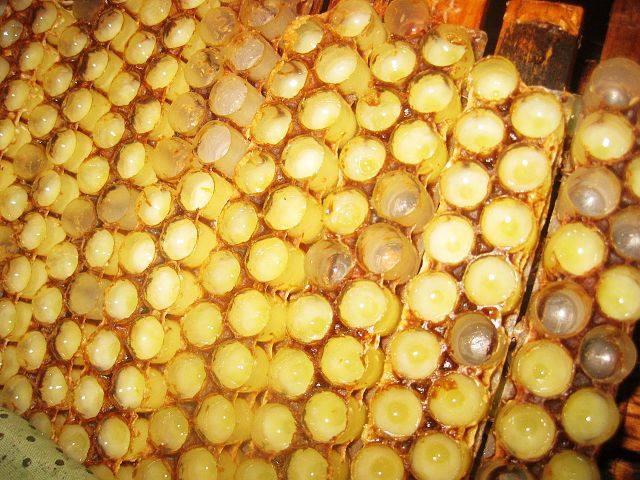
3. The relationship between larval feed and queen bee quality.
Chen Shibi et al selected four bee colonies with similar conditions as feeding groups and divided them into four groups. the first group was moved to the middle of Taiji with royal jelly, the second group with honey in the middle of Taiji, the third group with compound migratory worms, and the fourth group without adding any feed in the middle of Taiji.
Each feeding group releases 30 Taiwan-based nurturing king frames. The average birth weight of queen bee was 250.36mg, the average birth weight of queen bee cultivated in the platform of honey was 250.82mg, which was almost the same as that of compound transfer, the average birth weight of queen bee cultivated by dry transfer was 228.21mg, and the average birth weight of queen bee bred by adding water diluted with royal jelly produced for 72 hours was the lowest, with an average of 226.07mg.
This shows that the commonly produced royal jelly is not suitable to be used as feed for queen bee larvae. As soon as the small larvae of the compound migratory worm moved into the king platform, the feed of the small larvae was immediately eaten, and the development of the queen bee larvae was little affected. After the fresh and thick honey taken from the nest is added to the midpoint of Taiji, the larvae are moved to it and put into the feeding colony, the feeding worker bees immediately suck up the honey in Taiji and immediately feed the queen bee larvae.
The quality of queen bee bred by compound transplanter and Wangtai midpoint plus honey is ideal. In other experiments, the birth weight of queen bee cultivated by compound transplanter is always the most stable. What needs to be concerned is that in recent years, there are many phenomena that jelly bees breed smaller queen bees on the premise of more royal jelly left in the royal jelly. The reason has not been confirmed whether it is the variation of bee species or the change of royal jelly composition.
4. The relationship between the number of migratory worms and the quality of queen bee.
According to the experimental results of Chen Shibi and others, the less the number of queen bees bred in the feeding colony, the heavier the birth weight of the queen bee. With the increase of the number of breeding kings in the feeding group, the birth weight of the cultivated queen bee decreases. In general, for the breeding of 12-15-frame bees, it is appropriate to cultivate 20-30 king platforms at a time. For a strong swarm, there should be no more than 40 Wangtai at most.
5. The relationship between the status of the platform and the quality of the queen bee.
Suletanov observed that the larvae transferred to the artificial platform were accepted within 6 hours, most of them were accepted within 4-5 hours, and the artificial platform modified by the colony before transfer could be accepted 1 hour in advance after the larvae moved in. The earlier the bees accept it, the greater the weight and quality of the queen bee cultivated by the larvae. After the king frame was added to the colony, the birth weight of the queen bee cultivated by the accepted larvae within 4 hours was increased by 10~20mg (mg) compared with that accepted 1-2 hours later.
6. The effect of capping Wangtai on the quality of queen bee in feeding group.
When adding the new king frame, Taranov proposed and retained the original king frame which had been covered by the king platform, so as to compare the influence of the sealed king platform in the feeding group on the quality of the queen bee. The birth weight of queen bees bred from uncovered colonies is about 15mg higher than that of queen bees bred in colonies with capped royal terraces.
7. The relationship between the status of the feeding colony and the quality of the queen bee.
Chen Shibi and other studies have confirmed that there are more feeding bees, more lids, fewer eggs and fewer eggs in the feeding group, and the quality of the queen bee is high.
Source: collation of documents
Links to the techniques of Bee farming and King breeding
Techniques of external beekeeping, techniques of king beekeeping, video links
Several Behavioral language links in Bee Culture Technology
Biological characteristics of honeybee population in honeybee culture technology (1) link
Interested bee lovers can learn about the following books.
Function (! window.__TEMAI_PARSED) {if (! honeybee breeding) {if (! honeybee breeding) {if (window.responsive1responsive.dpricefarming 1) window.responsive.dpricefarming window.responsiveScale (1flicker0), window.isPGCyst0window.purchase requestType = "app" "app") {var e = "% 3Cscript%20src=%22 https://s3.pstatp.com/inapp/toutiao.js%22%3E%3C/script%3E";" Document.write (decodeURI (e))} var t=document.createElement ("script"); t.src = "https://s2.pstatp.com/pgc/v2/pgc_tpl/pagelet/card/click_ccce36d.js",document.body.appendChild(t)}}();"
- Prev
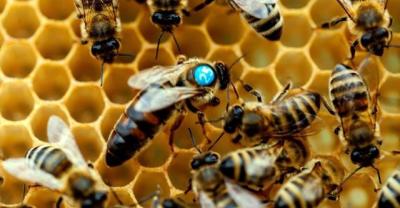
Transformation and balance of nitrogen in Aquaculture Water
Nitrogen is one of the important elements of animals and plants in water. The content and distribution of nitrogen in water have a far-reaching impact on the yield and quality of fishery culture.
- Next
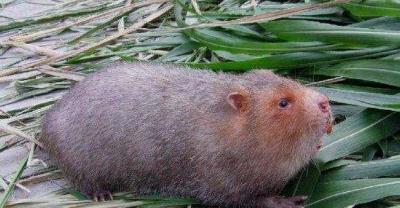
The mandarin duck breeding method introduced by France to see how foreigners do it.
Mandarin ducks were introduced into China from France and were originally wild in South America. Its physique is strong, the figure is wide in front and narrow behind, the body is horizontal with the ground, the wing is long to the tail, the head is big.
Related
- On the eggshell is a badge full of pride. British Poultry Egg Market and Consumer observation
- British study: 72% of Britons are willing to buy native eggs raised by insects
- Guidelines for friendly egg production revised the increase of space in chicken sheds can not be forced to change feathers and lay eggs.
- Risk of delay in customs clearance Australia suspends lobster exports to China
- Pig semen-the Vector of virus Transmission (4)
- Pig semen-the Vector of virus Transmission (3)
- Five common causes of difficult control of classical swine fever in clinic and their countermeasures
- Foot-and-mouth disease is the most effective way to prevent it!
- PED is the number one killer of piglets and has to be guarded against in autumn and winter.
- What is "yellow fat pig"? Have you ever heard the pig collector talk about "yellow fat pig"?

